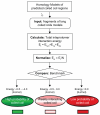Structural and functional insights on the Myosin superfamily
- PMID: 22399849
- PMCID: PMC3290112
- DOI: 10.4137/BBI.S8451
Structural and functional insights on the Myosin superfamily
Abstract
The myosin superfamily is a versatile group of molecular motors involved in the transport of specific biomolecules, vesicles and organelles in eukaryotic cells. The processivity of myosins along an actin filament and transport of intracellular 'cargo' are achieved by generating physical force from chemical energy of ATP followed by appropriate conformational changes. The typical myosin has a head domain, which harbors an ATP binding site, an actin binding site, and a light-chain bound 'lever arm', followed often by a coiled coil domain and a cargo binding domain. Evolution of myosins started at the point of evolution of eukaryotes, S. cerevisiae being the simplest one known to contain these molecular motors. The coiled coil domain of the myosin classes II, V and VI in whole genomes of several model organisms display differences in the length and the strength of interactions at the coiled coil interface. Myosin II sequences have long-length coiled coil regions that are predicted to have a highly stable dimeric interface. These are interrupted, however, by regions that are predicted to be unstable, indicating possibilities of alternate conformations, associations to make thick filaments, and interactions with other molecules. Myosin V sequences retain intermittent regions of strong and weak interactions, whereas myosin VI sequences are relatively devoid of strong coiled coil motifs. Structural deviations at coiled coil regions could be important for carrying out normal biological function of these proteins.
Keywords: coiled coil; myosin domain architecture; myosin structure.
Figures







References
-
- Richards TA, Cavalier-Smith T. Myosin domain evolution and the primary divergence of eukayotes. Nature. 2005;436:1113–8. - PubMed
-
- De Lozanne A, Spudich JA. Disruption of the Dictyostelium myosin heavy chain gene by homologous recombination. Science. 1987;236:1086–91. - PubMed
-
- Knecht DA, Loomis WF. Antisense RNA inactivation of myosin heavy chain gene expression in Dictyostelium discoideum. Science. 1987;236:1081–5. - PubMed
-
- Tuxworth RI, Titus MA. Unconventional myosins: anchors in the membrane traffic relay. Traffic. 2000;1:11–8. - PubMed
Grants and funding
LinkOut - more resources
Full Text Sources
Molecular Biology Databases

